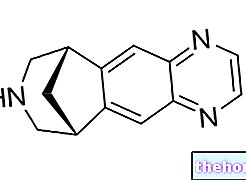
What is Cervarix?
Cervarix is a vaccine consisting of a suspension for injection containing purified proteins for two types of the human papillomavirus (types 16 and 18). It is available in vials or pre-filled syringes.
What is Cervarix used for?
Cervarix is indicated in women and girls from nine years of age to protect against precancerous lesions (abnormal cell proliferation) in the cervix (cervix) and cervical cancer which are caused by infections with certain cancerous types of human papilloma virus (HPV).
Cervarix is given according to official recommendations.
The vaccine can only be obtained with a prescription.
How is Cervarix used?
Cervarix is given in three doses. An interval of one month between the first and second dose and a five-month interval between the second and third dose is recommended. However, if necessary, the second and third doses can be administered with a longer period to elapse. It is recommended that once the first dose of Cervarix is received, treatment is completed by taking all three doses. The vaccine is given by injection into the shoulder muscle.
How does Cervarix work?
Papillomaviruses are viruses that cause warts and abnormal tissue growth. There are over 100 types of papillomaviruses, some of which are associated with cancers of the genitals. HPV types 16 and 18 are responsible for approximately 70% of cervical cancers.
All papillomaviruses have an envelope or "capsid", which is made up of proteins called "L1 proteins". Cervarix contains purified L1 proteins for HPV types 16 and 18; these are produced by a method known as 'recombinant DNA technology', ie they are made by a cell that has received a gene (DNA) which makes it capable of generating L1 proteins. The proteins are collected in "virus-like particles" (structures that resemble HPV viruses, so that the body has no difficulty in recognizing them).
When a patient receives the vaccine, the immune system produces antibodies against the L1 proteins. The antibodies help destroy the virus. Following vaccination, the immune system is able to produce antibodies more quickly when exposed to real viruses. This will help protect against diseases caused by these viruses.
The vaccine is produced with an 'adjuvant system' that contains MPL, a purified lipid (a fatty substance) extracted from bacteria, which enhances the immune system's response to the vaccine. The vaccine is "adsorbed," meaning virus-like particles and MPL are fixed on an aluminum compound to stimulate a better immune response.
How has Cervarix been studied?
The main study of Cervarix involved nearly 19,000 women aged 15-25. Cervarix was compared with another vaccine that is not active against HPV viruses (specifically, a vaccine against the hepatitis A virus). The study examined how many women, who in the vast majority at the start of the study did not have a "HPV type 16 or 18, developed precancerous lesions of the cervix related to a" HPV type 16 or 18 infection. Study participants were monitored for up to four years after the first dose of the vaccines were given .
Two additional studies looked at the development of antibodies to HPV types 16 and 18 in 2,225 girls aged 10 to 14 years. Two additional studies looked at the development of antibodies against HPV types 16 and 18 in 1,792 girls between the ages of 9 and 25. The studies compared antibody levels before vaccination and after the third dose.
What benefit has Cervarix shown during the studies?
Cervarix was more effective than the comparator vaccine in preventing abnormal cell proliferation in the cervix. In the main study, among the more than 7,000 women vaccinated with Cervarix and who had never contracted an "HPV type 16 or 18 infection, four developed precancerous lesions in the cervix related to an" HPV infection after 39 months. types indicated, compared to 56 of the more than 7,000 women who received the other vaccine. The study also showed that Cervarix may offer protection against infections or injuries related to other types of HPV.
The additional studies showed that all girls aged 9 and over, vaccinated with Cervarix, developed levels of protective antibodies against HPV types 16 and 18, indicating that the vaccine is likely to be effective in preventing HPV infections in girls from age to age. 9 years old.
What is the risk associated with Cervarix?
The most common side effects associated with Cervarix (seen in more than 1 in 10 patients) are headache, myalgia (muscle pain), injection site reactions including pain, redness and swelling, fatigue (tiredness). For the full list of side effects reported with Cervarix, see the package leaflet.
Cervarix must not be used in people who may be hypersensitive (allergic) to the active substance or to any of the other ingredients. Vaccination should be postponed in patients with a high fever.
Why has Cervarix been approved?
The CHMP decided that Cervarix's benefits are greater than its risks and recommended that it be given a Marketing Authorization for the medicine.
Other information about Cervarix:
On 20 September 2007 the European Commission granted GlaxoSmithKline Biologicals s.a a "marketing authorization" for Cervarix valid throughout the European Union.
For more information on Cervarix therapy, read the package leaflet (included with the EPAR) or contact your doctor or pharmacist.
Last update of this summary: 12-2011.
The information on Cervarix - Human Papillomavirus Vaccine published on this page may be out of date or incomplete. For a correct use of this information, see the Disclaimer and useful information page.




























